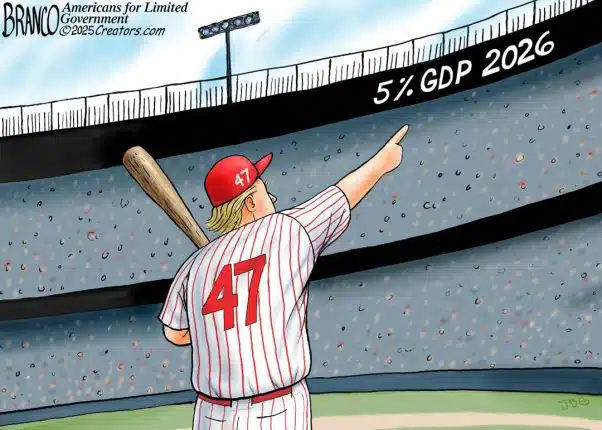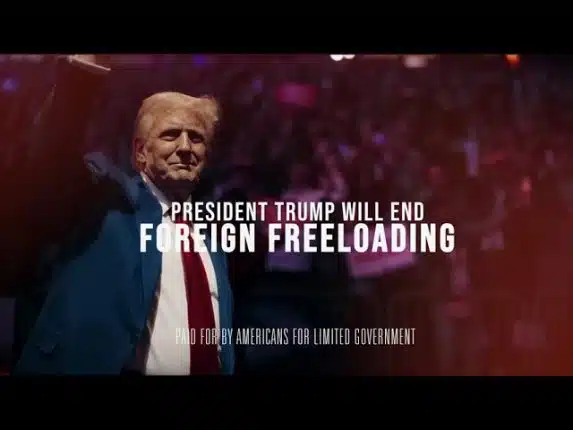
“These products are subject to the existing 20% Fentanyl Tariffs, and they are just moving to a different Tariff ‘bucket.’”
That was President Donald Trump on Truth Social on April 13, clarifying that technology products manufactured in China including phones, computers and chips and other semiconductors will be subjected to the 20 percent tariff to foster greater cooperation in combating fentanyl shipments to the U.S. that the President levied on March 3.
In addition, the President stated that the investigation into the electronics supply chain on national security grounds — hinting at potential additional tariffs under 19 U.S.C. Sec. 1862, Section 232 of the Trade Expansion Act of 1962 — that Trump launched on Jan. 20 is ongoing. Trump wrote, “We are taking a look at Semiconductors and the WHOLE ELECTRONICS SUPPLY CHAIN in the upcoming National Security Tariff Investigations.”
Here, Trump is in part granting what appears to be temporary a reprieve to U.S. companies like Apple and Dell that are deeply invested in China, who were initially being subjected to the 145 percent tariff — the 20 percent fentanyl cooperation tariff plus the 125 percent overall tariff — that Trump put into place on April 9.
But as the Section 232 national security investigations commence by U.S. departments and agencies including the Departments of Commerce and Defense, taking into account recent advancements in artificial intelligence chips and technologies — some of the most advanced technologies with military applications in the world — they will almost certainly find that the consolidated manufacturing of these products singularly in China and Taiwan particularly is quite precarious and recommend prioritizing domestic production.
It would be like being dependent on Russian imports of rocket technologies to build intercontinental ballistic missiles during the Cold War — something that never happened because it would have been too dangerous and given the Soviet Union unnecessary leverage with which to threaten the U.S. Instead, obviously, we had our own rocket program.
And so too it will be with chips and other computer technologies — because it must be so in order to protect U.S. national security.
Even the previous Democratic administration under former President Joe Biden and Congress had some thought to this problem when they enacted the 2022 CHIPS Act to subsidize domestic production of semiconductors. The law even defined financial awards under the law to be necessary to national security in order to “provide a secure supply of semiconductors necessary for the national security, manufacturing, critical infrastructure, and technology leadership of the United States and other essential elements of the economy of the United States…”
If subsidizing domestic production of semiconductors is critical to national security then so too is the use of tariffs to reshore domestic production of the devices that use these chips. How would the Commerce and Defense Departments come to any other conclusion?
So, Trump’s announcement putting electronics into the 20 percent tariff “bucket” — like everything else in Trump’s art of the deal — is not permanent.
It is a part of the negotiation, and could also be viewed in light of China’s announcement of a cap to their tariff of U.S. goods at 125 percent. Trump responded reciprocally by pausing the 125 percent additional tariffs on electronics. This gives American companies more time to move away for Asia and also gives financial markets more breathing room to adjust to the new reality.
It’s not an ideal situation. American companies have had 10 years — 2015 was the year Trump started running for president — to see what direction and the political reality in the U.S. was, that globalization and outsourcing was a majority killer. When Democrats lost in 2016, they left President Trump’s Chinese tariffs in place after winning in 2020.
After Trump’s loss, the public was also immediately aware that Trump would run again, and following the disastrous inflation of 2021 and 2022, would likely win and then go even further. During that entire decade, what have companies like Apple done? Moved some things to India?
Politically, the move is not to merely to leave China, but ultimately to build advanced technologies here. It will take time. If China wants to help ease the transition and make a deal on agriculture, etc. certainly President Trump would be open to that, too, as he was in the Jan. 2020 trade deal with China.
That has all the elements of a strategy. Trump’s approach 1) Incentivizes companies to build in America; 2) Puts a perceived deadline on companies departing China; and 3) Continues dialogue with trade partners to facilitate the transition.
As it is Apple “pledged” $500 billion of U.S. investment but at this point, one can imagine they’ve spent more money lobbying against tariffs than building phone factories here. Maybe they need to make up their minds like five minutes ago.
Ultimately, it could mean that Trump’s tariffs are not nearly high enough, and further escalation will be required in the end to facilitate the transition. Simultaneously, what the President is doing needs to be politically sustainable.
If the electronics companies lead the U.S. around by the nose on building stuff here, making promises but not delivering, would anyone at all be surprised that the tariff might need to be much higher.
Clearly, Trump is keeping that leverage, that stick, in hand and offering a temporary incentive. If the companies are crying uncle and saying they need time to move, the proof will be in the pudding. They have to start building here.
President Trump is being clear as day on the need for domestic production: “What has been exposed is that we need to make products in the United States, and that we will not be held hostage by other Countries, especially hostile trading Nations like China, which will do everything within its power to disrespect the American People. We also cannot let them continue to abuse us on Trade, like they have for decades, THOSE DAYS ARE OVER!”
For emphasis, Trump warned, “NOBODY is getting ‘off the hook’ for the unfair Trade Balances, and Non Monetary Tariff Barriers, that other Countries have used against us, especially not China which, by far, treats us the worst!”
The President’s critics can appear on television every day for the next three years or so repeating the word “uncertainty” over and over again all they want but the path Trump is articulating is quite certain — he is leading the country in what amounts to a technology moonshot for the 21st Century.
And even if Democrats win some elections in the future, here’s the important part for the bean counters, as Biden demonstrated when he declined to remove the tariffs on China — that will remain the same. Because they want to be able to win in states like Pennsylvania and Michigan, too.
Do U.S. companies, with responsible business managers, anticipate that the both the national security realities and the political realities of advanced technologies manufacturing will favor continued outsourced production? Is that what Wall Street is really anticipating? On what earthly plane is that even remotely possible?
Maybe they’re not very perceptive to the not merely shifting but the shifted political reality, past tense, that has already occurred.
Insourcing is going to continue, regardless of whether President Trump and Republicans are in power. This is a permanent economic transition and you’ve all had a decade to figure it out. Get with the program. Adapt, or die.
Robert Romano is the Executive Director of Americans for Limited Government Foundation.






